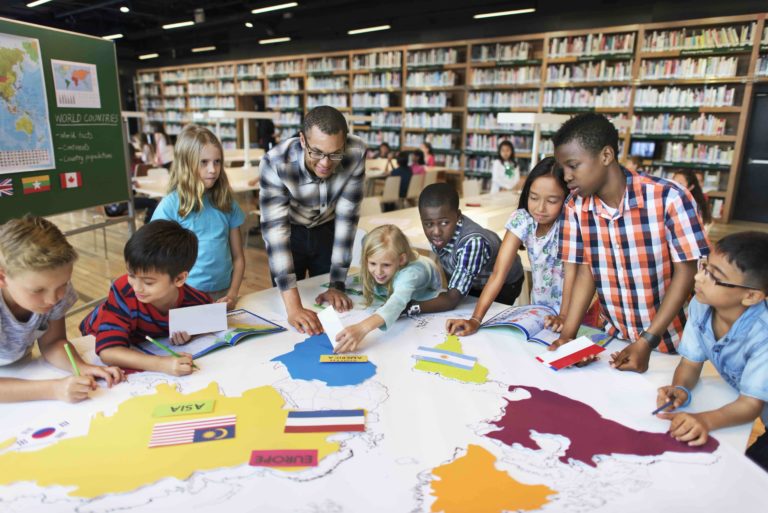New language, new food, new neighborhood, new home, new school, new everything. Beginning a new chapter of your life is challenging, but changing almost everything that has been a part of your life at one time can be overwhelming. ESL (English as a Second Language) students have left the country that they have called home, and along with that, they may feel that their culture, traditions, and themselves have been lost along the way. That is why educators in the students’ new schools need to make it a priority to learn all about the students. If ESL students feel as though a teacher connects with them, they are much more likely to become part of the school community and have a desire to learn more about their new school.
To do this, ESL teachers should take time when the new ESL student is being tested for English proficiency to introduce themselves so that the student has a familiar face in the school. This could help put the student at ease. The student may also be willing to share information about him or herself. If the student is a beginner ESL student, it would be very helpful to have a translator present at this time to answer any questions the student might have about the school. Additionally, learning about the student’s background before he or she arrives at the school is very helpful. Even if a teacher cannot get specific data about the child, it helps to learn about the country the student is from, the language spoken, and typical traditions. Feeling welcomed and like you belong from the first day will make any student, ESL or not, feel like part of the school community.
Family – School Connections
Family life is extremely important in many cultures. When families feel part of a school community, the likelihood of success for students increases. This is the same with ESL students. Parental involvement is crucial to their academic success. Language barriers or work hours may hinder ESL parental involvement, but schools must try to overcome these obstacles. ESL teachers can have alternative dates and times for parent/teacher meetings. Furthermore, having translators available so that parents can comprehend and feel comfortable to ask questions in their own languages will increase participation. Schools can host meetings in the communities to make them more accessible to ESL parents. In addition, all documents sent home should be sent in both English and the first language of the student. When parents can understand what is going on in their children’s school life, they are much more likely to encourage their children to participate in activities and become part of the school community.
Cultural Learning in the Classroom
Another great method to make ESL students feel like part of the school community is welcoming them to share their culture with everyone. All classes, from math to science to ESL, can offer opportunities where cultures are celebrated. This does not mean losing class time for parties. Teachers can encourage ESL students to share information on their culture related to the topic at hand. By doing this, other students learn about different parts of the world and ESL students get to share details about themselves and feel proud of their heritage. If ESL students are too nervous to present about their home country, teachers can incorporate specific cultural information into their lessons.
Furthermore, teachers can also choose books and texts that have diverse themes. Exposing non-ESL students to different cultures will make them much more likely to accept and welcome ESL students. It will also make students curious to learn more and become global citizens. Preparation is key to incorporating cultures into lessons. However, if the extra time is taken, true cultural learning will occur and make a more inclusive school community.
Student Ambassadors Program
As ESL students become more settled into the routines of their new school, creating a Student Ambassadors Program would add a wonderful sense of belonging to the school. The Student Ambassadors Program has current ESL students be representatives of the school for new ESL students. Current and new students will be paired based on common first language or culture, if possible. They will escort them around the school for their first week. The ambassador will show them the cafeteria, library, nurse’s office, and all other important places in the school. They will also eat lunch with them and help them with their lockers. Furthermore, the Student Ambassadors will take the new ESL students to activities or events happening at school to help them become part of the school community. New ESL students will learn about different school clubs, sports, and activities. This will help the ESL students feel more comfortable going to school events.
School Environment
The most important part in getting ESL students to become part of the school community is making sure the school has a welcoming environment for all students. Administrators, teachers, staff, and students need to be culturally sensitive and seek out the newest members of the school community, especially the new ESL students. By doing this, a school will truly become a global community.




